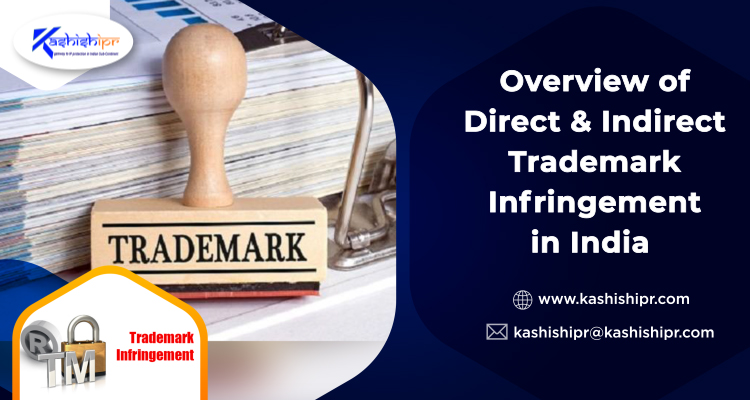Overview of Direct & Indirect Trademark Infringement in India
 Posted On
Posted On
Being a mixed market, India has many industries operating under the free market concept. Without any doubt, the competition in the Indian markets is exceedingly fierce. For any company to thrive and do exceptionally well in the open market, it must create brand recognition among the general public and enhance the brand value. The simplest mechanism of achieving the same is through Trademark Registration.
The prime purpose of a trademark is to help people identify and recognize the origin or source of a specific product or service. The origin or source of the said product or service helps people determine its quality. Consumers usually base their purchasing decision on the aspect of quality. A trademark reflects the source or origin and the quality of the products or services.
Based on all the previously mentioned points, it is imperative to ensure that no third party or entity infringes upon your Registered Trademark. Trademark Infringement usually causes immense loss of finances and goodwill to the owner of the infringed mark. Hence, it is highly recommended to stay vigilant and prevent potential infringers from riding on the reputation and goodwill that you established over the years.
Types of Trademark Infringement in India
Section 29 of the Trademarks Act, 1999 (referred to as ‘Act’ further in the article) has defined what constitutes trademark infringement in India. In simple and clear terms, trademark infringement occurs when an unauthorized person or entity uses a mark identical or deceptively similar to an already existing registered trademark. When looking into trademark infringement, one must know and understand its two types, which are as follows:
A) Direct Infringement
A few constituent elements have to be met for direct infringement to occur, which are mentioned below:
- Trademark Use by an Unauthorized Person– It implies that trademark infringement occurs when a registered trademark is used by an unauthorized person who is not the owner or the licensee of the said mark. If the registered trademark is used with the consent of its owner, it does not constitute an instance of trademark infringement.
- Identical or Deceptively Similar Marks – The test for determining whether the mark used by the unauthorized person is identical or deceptively similar to an already existing registered trademark lies in exploring the possibility of a likelihood of confusion among the public. If a common consumer is likely to get confused between the marks and may think of them being the same, then there is an instance of trademark infringement.
- Registered Trademarks – The scope of trademark protection, according to the Act, extends to only those marks that have been registered with the trademark registry of the nation. In the scenario where infringement of an unregistered mark is involved, the common law concept of passing off applies.
- Class of Goods/Services – For establishing the infringement of a registered trademark, even the goods or services of the infringer must be identical or deceptively similar to the goods or services represented by the registered trademark.
B) Indirect Infringement
There is no provision in the Act, unlike for direct infringement, dealing with the instances of indirect infringement specifically. However, the same doesn’t imply that there is no liability for indirect trademark infringement. The principle and application of indirect trademark infringement come from the universal law principle. It holds accountable both the principal infringer and even the one (if any) who abets or induces the direct offender to infringe upon the registered trademark. Indirect trademark infringement has two further categories, including:
- Vicarious Liability – It usually applies in the case of employer-employee relationships and is mentioned in Section 114 of the Act. As per this Section, if a company or a firm commits an offense under the Act, then every person responsible for the company shall be held liable except the ones who acted in good faith and didn’t possess knowledge about the said infringement.
A person shall be held vicariously liable under the following circumstances when:
- He has the ability to control the actions or activities of the direct infringer.
- He possesses knowledge about the instance of infringement and contributes to it.
- He may derive financial benefits from the said infringement.
*Kindly note that the only exception to vicarious liability of a company or a firm for trademark infringement is when it has acted in good faith with no idea about the said infringement.
- Contributory Infringement – A person shall be held liable for contributory infringement under the following circumstances when:
- He knows about the said instance of trademark infringement.
- He contributes materially to direct infringement.
- He induces the principal infringer to commit trademark infringement.
*Kindly note that in the case of contributory infringement, there exists no exception as there is no possibility of the contributory infringer to act in good faith.
Therefore, it would be wise to say that any form of trademark infringement, be it direct or indirect, can attract liability in India. To avoid trademark infringement, reach out to our trademark attorneys at kashishipr@kashishipr.com and get a consultation before launching your brand or product in the market. ✅ For more visit: https://www.kashishipr.com/
